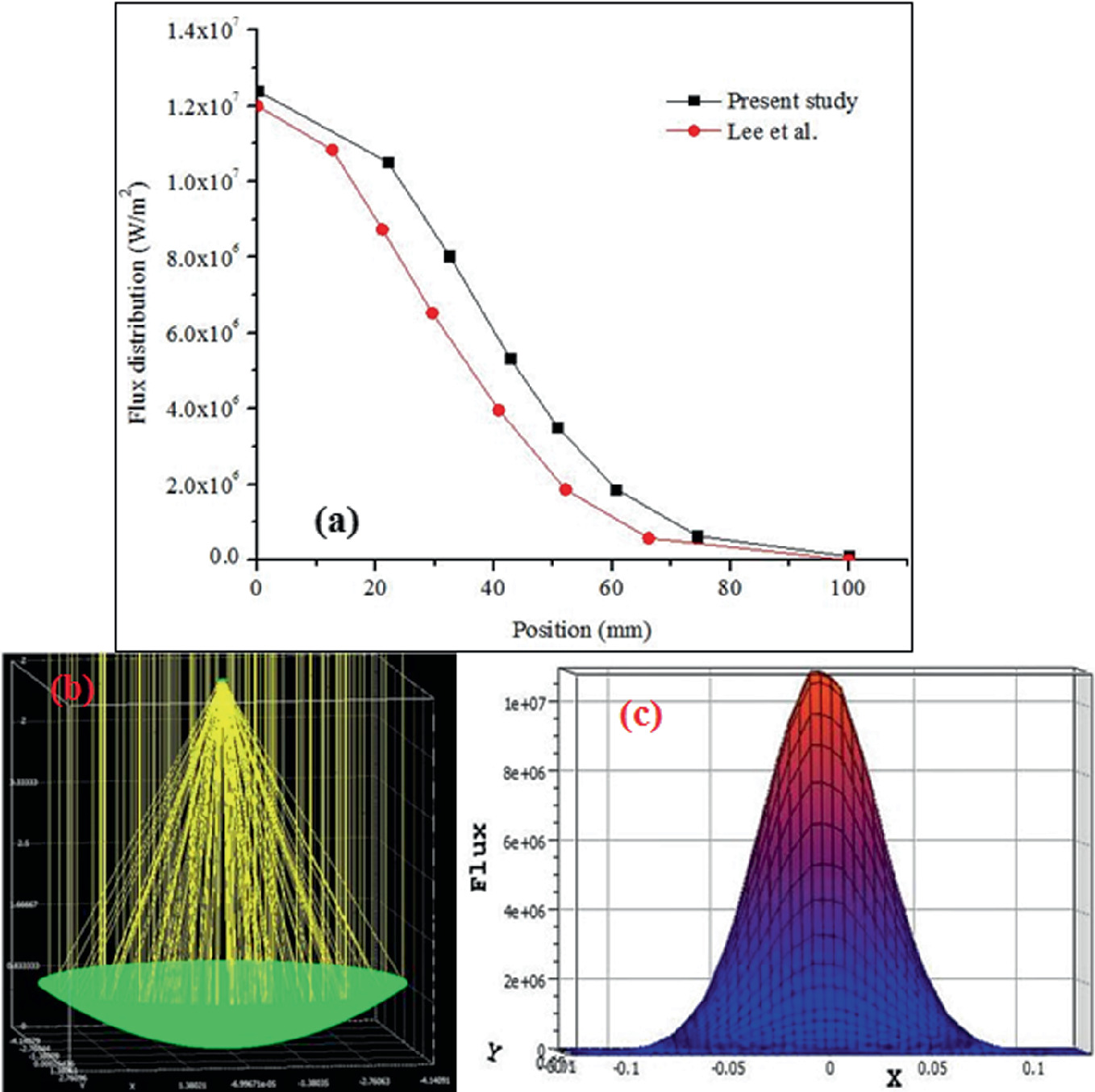
Recently, an interesting analytical solution for the optical performance of parabolic dish reflectors with flat receivers was presented by O’Neill and Hudson. Traditionally, the optical analysis of radiation concentrators has been carried out by means of computer ray-trace programs. Usually reflecting petals are made from glass and their thickness is from 0.7 to 1.0 mm. The parabolic mirror can be designed with large number of elementary components known as reflecting petals or facets. The parabolic mirror is very expensive to fabricate and its cost escalates rapidly with increase of aperture area. The ideal optical configuration for the solar parabolic thermal concentrator is a parabolic mirror. The main types of concentrating collectors are parabolic dish, parabolic trough, power tower, a Fresnel collector with mirror or lens, and stationary concentrating collectors. They can be designed as various devices including solar cooker, solar hydrogen production, and Dish Stirling system of harvest electricity. In addition, the list of possible alternative applications of this technology is growing, due to the problems of oil dependency and global warming. Solar thermal collectors have been widely used to concentrate solar radiation and convert it into medium-high-temperature thermal processes. The device which is used to transform solar energy to heat refers to a solar collector. This paper presents the numerical results of the optimization of the solar image in a receiver for a fixed absorber in a solar parabolic concentrator, which was a project supported by the Ministry of Education, Science and Technological Development of Republic of Serbia. The goal of this paper is to present the optical design of a low-tech solar concentrator that can be used as a potentially low cost tool for laboratory scale research on the medium-temperature thermal processes, cooling, industrial processes, polygeneration systems, and so forth. The total flux on the receiver and the distribution of irradiance for absorbing flux on center and periphery receiver are given.
#Soltrace online software#
This paper presents optical simulations of the parabolic solar concentrator unit using the ray tracing software TracePro. For the construction of the solar collectors, mild steel-sheet and square pipe were used as the shell support for the reflecting surfaces. The parabolic dish of the solar system consists of 11 curvilinear trapezoidal reflective petals.

The system has diameter mm and focal distance mm. In this paper detailed optical design of the solar parabolic dish concentrator is presented.

The efficient conversion of solar radiation into heat at these temperature levels requires a use of concentrating solar collectors. This study presents the geometric aspects of the focal image for a solar parabolic concentrator (SPC) using the ray tracing technique to establish parameters that allow the designation of the most suitable geometry for coupling the SPC to absorber-receiver.


 0 kommentar(er)
0 kommentar(er)
